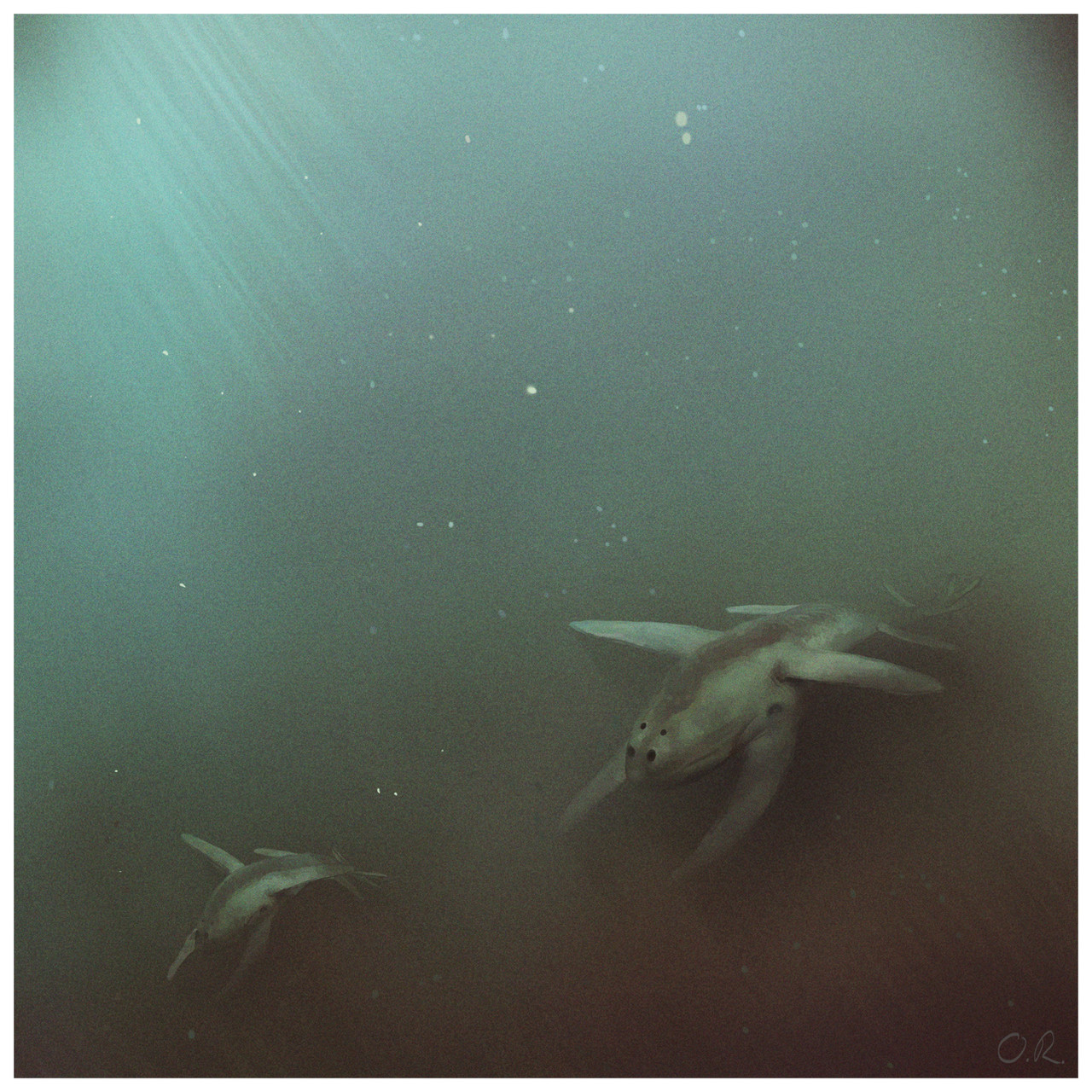HOME | DD
 RalfOswald — The Ukuul
RalfOswald — The Ukuul

#aliencreature #alienplanet #alienworld #artwork #creative #creature #creaturedesign #discovery #expedition #exploration #guide #painting #photo #photography #planet #scifi #siencefiction #vintage #creatureart #speculativeevolution #eurytos #art #ralfoswald
Published: 2024-04-22 19:28:45 +0000 UTC; Views: 1835; Favourites: 31; Downloads: 0
Redirect to original
Description
As the giant storm finally died down, we were able to continue our exploration. Most of the drones were still scattered deep underwater at that point, so we decided to have them converge at a certain location, hugging the coastline, so to speak, and slowly working them up the water column until they reached the surface again.
Visibility was very low in the part of the ocean where our probes currently resided, even by Eurytos’ standards. Because our probes were in a large lagoon isolated from the rest of the ocean by a powerful underwater stream, they were in an area with very little water movement. This environment was the perfect habitat for the microorganisms living in Eurytos’ oceans, allowing them to accumulate and multiply almost uncontrollably, creating an almost gel-like layer at the water’s surface.
The “Alien Soup” our drones found themselves in was filled with all sorts of different organisms, yet they moved so fast and appeared and disappeared in the murky void so quickly that there wasn’t enough time to study them. However, after a short while, we did manage to catalog at least one new species. They moved eerily slowly through the murky water, flapping their fins on their sides in a rhythmic pattern. For seemingly no reason, one of the creatures started to emit a loud shriek. The sound was similar to two metal surfaces scraping on each other and was still uncomfortable to listen to, even when muted through our speakers. The other creature then started to slowly dive down into the depths and was shortly followed by the former.
Although we do not know for certain, we suspect that this reaction was triggered by the presence of our drones. We think that the two “fin-like tusks” below their eyes are some sort of sensory organ that was unable to detect our probes from afar. They must have gotten startled by their presence once they were close enough to detect them visually. How these sensory organs work, however, is as of yet still a mystery to us.
Related content
Comments: 4

👍: 1 ⏩: 0

👍: 1 ⏩: 0

👍: 1 ⏩: 1

👍: 0 ⏩: 0
























